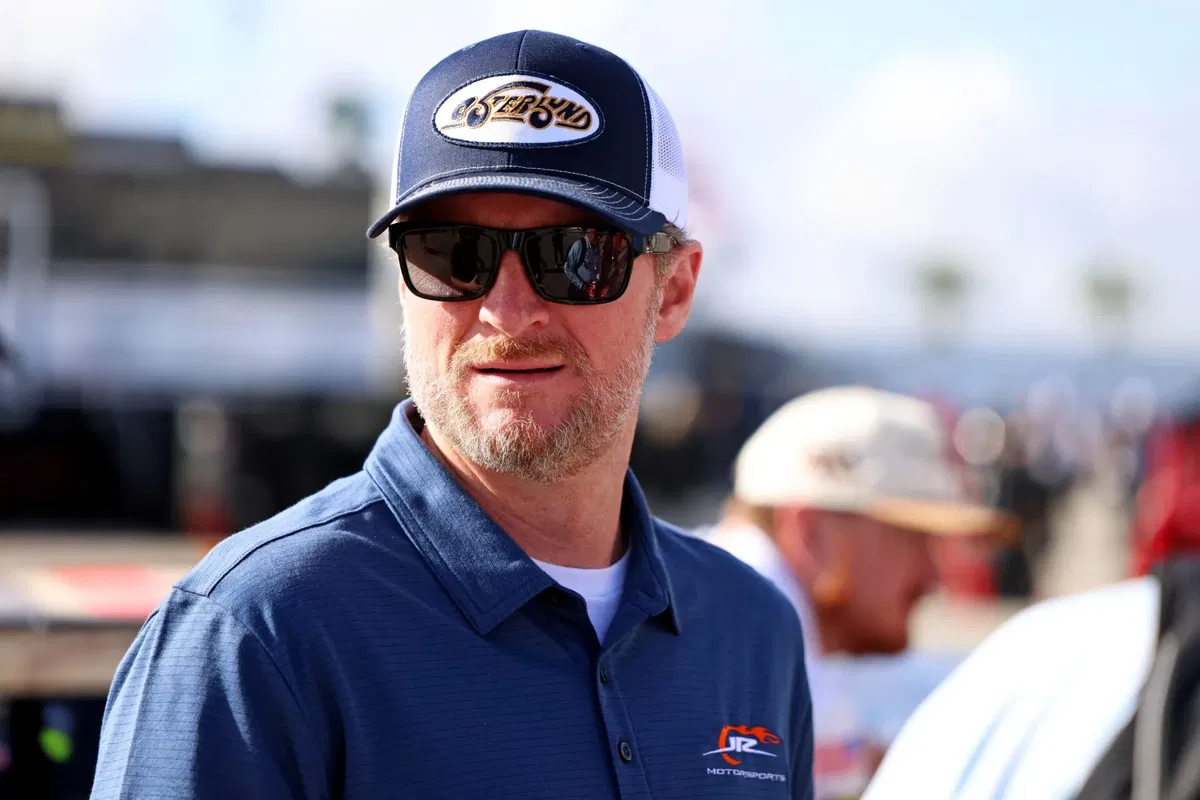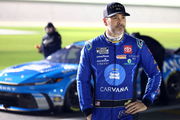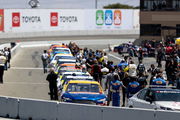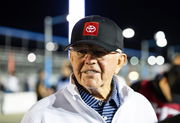
Imago
Credit: Peter Casey-Imagn Images

Imago
Credit: Peter Casey-Imagn Images
There’s a reason Dover International Speedway is nicknamed the Monster Mile. With its high bank, 1-mile concrete layout, and aggressive corners, Dover has long tested the stamina and the skill of NASCAR drivers. Built in 1969 and resurfaced with concrete in 1995, the track has developed a reputation for chewing up tires, cars, and even Cup Series hopes.
Watch What’s Trending Now!
In recent years, the beast has been losing its bite, at least in the eyes of fans and insiders like Dale Earnhardt Jr., who has voiced growing concerns over the racing product. From tire grip to downforce struggles and dirty air, Dover’s once intimidating identity might now be what is holding the sport back.
ADVERTISEMENT
Dale Jr. makes a nasty admission about Dover’s inability to help out drivers
The track initially had an asphalt surface, and for nearly 3 decades, that surface gave drivers more headaches than highlights. By the early 90s, the complaints had reached a boiling point. Tires were consistently blowing out, the surface was cracking, and some drivers called the racing downright dangerous. Mark Martin even said that the track was “embarrassing” after a race filled with cut tires and wrecks.
And so in 1995, Dover made a bold switch. It ripped up the aging asphalt and laid down concrete, the first NASCAR track to ever do so. The benefits were immediate. No more mid-race potholes, no more constant repacking, and far fewer tire failures. The concrete came with its own challenges. It doesn’t wear like asphalt. It holds heat differently, stays more consistent across the weekend, and refuses to burn the rubber in the same way. That ability sounds great in theory until you mix it with the reality of today’s NASCAR. The Next GEN cars are heavily affected by dirty air, and on the surface, where grip is already hard to come by, that makes passing a nightmare.
And Dale Earnhardt Jr., reflecting on the event, didn’t bury the lead. He said on Dirty Mo Media, “And because of the Next Gen and dirty air—it’s just a bad combination. I hate to bring this up or mention this, but it is what it is. And so, it produced what we saw. Now, we got a pretty neat ending, I thought, with the weather. And I’m glad NASCAR allowed them to get going again and tried to get the race going again.” Those five words were enough to build the Hall of Famer’s case.”
ADVERTISEMENT
Dale Jr.’s frustration with the pairing of Next-GEN cars and dirty air, especially at Dover, is echoed across the NASCAR community. Drivers and analysts have observed that the aerodynamic package of the Next-Gen car intensifies turbulent airflow, making it difficult for trailing cars to maintain grip and execute passes, particularly on tight, high-banked tracks like Dover’s concrete oval. These design works enhance the effect of dirty air, and Chase Elliott recently warned that the issue is only going to get worse. He says, “Dirty air has been a topic… you’re going to hear more of it. Just wait.”
The two-time Busch series champion goes on to say, “Dover’s always lacked grip. On the concrete, the tires are always kind of skating and chattering across the surface. Anytime you dial the downforce down just a notch, you’re not going to go anywhere. And it’s so pronounced at Dover. So that’s already a problem going into that racetrack.”
ADVERTISEMENT
Moreover, the reduced downforce and aerodynamic wake created by the Next-GEN cause an imbalance in the corners, robbing the following car of control and speed. This technical flaw, combined with the slick, single-groove nature of Dover’s surface, helps explain the processional racing Dale Junior alluded to, where track position and clean air outweigh driving skill until external factors, like weather, shake things up.
Junior has a suggestion for this problem. He says, “I wish—I know they don’t believe my a–, but—they won’t do it. They won’t do it. But I think if they paved the racetrack, we’d see a different race there. But they won’t. They’ll never do it. Now that they’ve got Miles the Monster and all that going on, they’re never going to change the, you know, the gimmick that Dover is.” And speaking of aero-packages, Kyle Busch didn’t hold back either; the two-time Cup Series champion seemed to have some suggestions too. But while Dover’s racing issue aged on, NASCAR television coverage faced a firestorm of its own.
Top Stories
Jimmie Johnson Caught at Center of Fan Storm as NASCAR Controversial Rule Sparks Daytona Backlash

Cup Legend to Step Down From His Role as NASCAR Organization Names New Executive Leader

Dale Jr Breaks Silence on His Media Empire ‘Agony’ as He Finally Snaps Back at Fan Expectations

Coach Gibbs Pulls the Trigger on Massive JGR Sale, Triggering $25M Shake-Up in Charlotte

Mark Martin Sounds Alarm on ‘Biggest’ On-Track Fan Moments That Killed Unfiltered NASCAR Rants

ADVERTISEMENT
Dale Jr. opens up about his TNT experience at Dover amid race coverage controversy
The sport is catching serious heat after both fans and Dale Jr. himself called out the network’s disjointed production during the Autotrader EchoPark Automotive 400 at Dover. Despite Junior’s repeated efforts to highlight key on-track moments, the broadcast team seemingly ignored them, frustrating viewers and stirring up backlash online.
The timing couldn’t have been worse for TNT, especially when compared to the polished performance of Amazon Prime Video. With its five-race NASCAR package, Amazon impressed fans with slick camera angles, dynamic mid-pack coverage, and attention to detail. TNT, by contrast, fell flat, and viewers weren’t shy about voicing their preference. Even Dale Jr. admitted on his podcast that moving from Amazon’s seamless broadcast to TNT’s chaotic setup was “bittersweet.” Amazon averages 2.16 million viewers per race and reaches younger demographics, exactly the crowd TNT now struggles to engage.
“TV production is showing they don’t care about racing,” one fan wrote, summing up the widespread sentiment. While another raged on, “It takes the NASCAR TNT production/camera operators 8 years to see what Dale Jr. sees in 4 seconds.” With NBC now set to take over the next stretches of races, many believe the future of NASCAR’s broadcasting reputation may hang in the balance. Unless networks learn from these missteps, they risk pushing away a loyal fan base at a critical point in the season. With the final races approaching and TNT on deck, fans are hoping the next production crew brings back the focus, clarity, and respect for the racing that the sport and its viewers deserve.
ADVERTISEMENT
ADVERTISEMENT
ADVERTISEMENT
ADVERTISEMENT

